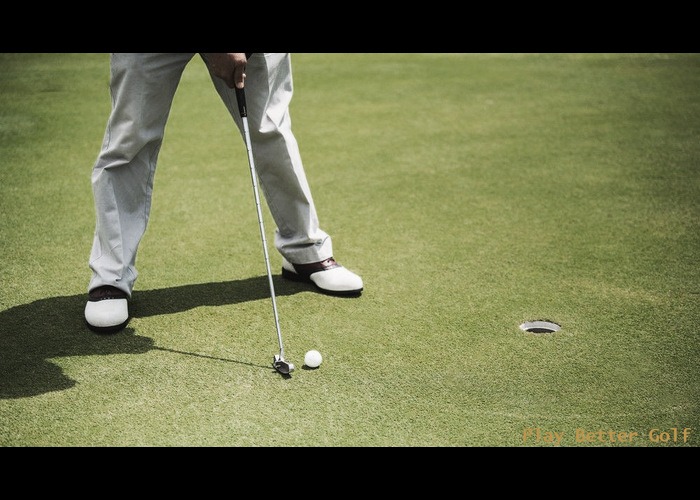
When it comes to the game of golf, mastering the art of chipping is crucial for lowering your scores and improving your overall performance. Chipping is an essential skill that allows you to make precise and controlled shots around the green. In this article, I will provide you with valuable tips and techniques to perfect your golf chipping technique.
The Importance of a Solid Chipping Technique
Having a solid chipping technique is essential for a successful round of golf. Chipping is all about finesse and precision, and a well-executed chip shot can save you valuable strokes on the course. A good chipping technique enables you to control the distance and trajectory of your shots, giving you the confidence to get the ball close to the hole and ultimately lower your scores.
Common Golf Chipping Mistakes to Avoid
To improve your chipping, it is important to be aware of the common mistakes that many golfers make. One common mistake is decelerating through impact, which often leads to chunked or thin shots. It is crucial to maintain a smooth and consistent swing tempo, accelerating through the ball for better contact and control.
Another mistake to avoid is using too much wrist action during the golf chipping motion. Excessive wrist movement can result in inconsistent strikes and lack of control over the distance and trajectory of the shot. Instead, focus on keeping your wrists firm and using your body rotation to generate power and control.
Lastly, avoid the tendency to scoop the ball off the ground when chipping. This can lead to thin shots that roll too far or even go off target. Instead, focus on striking down on the ball with a descending blow, ensuring solid contact and better control.
Golf Chipping Drills to Improve Your Technique
To improve your chipping technique, incorporating drills into your practice routine can be highly beneficial. One effective drill is to practice chipping with a towel under your left armpit (for right-handed golfers). This drill promotes a firm left arm and encourages a more consistent swing path. By keeping the towel in place throughout your chipping motion, you will develop better control and accuracy.
Another useful drill is the “gate drill.” Set up two tees a few inches apart on the ground, creating a narrow gate. Practice golf chipping through the gate, focusing on hitting the ball cleanly and avoiding contact with the tees. This drill helps improve your focus and precision, as well as your ability to strike the ball consistently.
Choosing the Right Club for Golf Chipping
Selecting the right club for golf chipping is crucial for achieving optimal results. Generally, it is recommended to use a wedge for most golf chipping situations. Wedges provide the necessary loft and control for accurate chip shots. However, the choice of wedge will depend on the specific circumstances you encounter on the golf course.
For shorter chip shots that require less roll and more loft, a higher lofted wedge such as a lob wedge can be ideal. On the other hand, for longer chip shots that require more roll and less loft, a lower lofted wedge such as a pitching wedge or gap wedge may be more suitable. Experiment with different wedges to find the ones that work best for your chipping game.
Understanding Different Chipping Situations on the Golf Course
When it comes to chipping, it is essential to understand the different situations you may encounter on the golf course. One common scenario is a chip shot from the fringe or rough. In these situations, it is important to make solid contact with the ball while also considering the grass or rough between the ball and the green. Adjust your technique and club selection accordingly to ensure a clean strike and effective shot.
8 Tour Pro Chipping Tips To Lower Your Scores
Another situation is a chip shot from a downhill lie or an uphill lie. When facing a downhill lie, the ball tends to come out lower and roll more. Adjust your setup and club selection to account for the slope and ensure the ball reaches the target. Conversely, when dealing with an uphill lie, the ball may launch higher and not roll as much. Again, adjust your setup and club selection accordingly to achieve the desired trajectory and distance.
Tips for Controlling Distance and Trajectory in Your Chipping
Controlling distance and trajectory is crucial for successful golf chipping. To control distance, focus on the length of your backswing. A shorter backswing will result in a shorter shot, while a longer backswing will generate more power and distance. Practice different backswing lengths to develop a better feel for distance control.
To control trajectory, adjust the position of the ball in your stance. Placing the ball farther back in your stance will result in a lower trajectory, while placing it more forward will promote a higher trajectory. Experiment with ball position to find the right balance between distance and trajectory for each golf chipping situation.
How to Develop Consistency in Your Chipping
Consistency is key when it comes to golf chipping. Developing a consistent chipping technique will greatly improve your overall performance on the golf course. To achieve consistency, focus on maintaining a consistent grip and setup for each chip shot. This will help promote a repeatable swing and ensure better control over the ball.
Additionally, practice your golf chipping from various lies and situations. By exposing yourself to different challenges, you will develop the ability to adapt your technique and produce consistent results. Incorporate regular golf chipping practice into your routine to build muscle memory and improve your overall consistency.
Practicing Chipping at Home or on the Driving Range
Improving your chipping skills doesn’t necessarily require being on the golf course. You can practice golf chipping at home or on the driving range to enhance your technique. Set up a chipping net or target in your backyard or find a designated chipping area at the driving range. This allows you to focus solely on your chipping without the distractions of a full golf course.
When practicing at home or on the range, incorporate the drills mentioned earlier to improve your technique. Focus on the fundamentals of a solid golf chipping motion, including a consistent tempo, solid contact, and controlled distance and trajectory. Regular practice in a controlled environment will translate to improved performance on the golf course.
Conclusion: Mastering the Art of Golf Chipping
In conclusion, mastering the art of golf chipping is essential for lowering your scores and improving your overall game. By following the tips and techniques outlined in this article, you can develop a solid chipping technique that allows you to control distance, trajectory, and ultimately get the ball closer to the hole. Remember to avoid common chipping mistakes, practice with purpose, and choose the right club for each situation. With dedication and practice, you can become a proficient chipper and take your golf game to the next level.
FAQs
Q1: What is chipping in golf?
Chipping in golf refers to a short, controlled shot played from close to the green. It is used to get the ball onto the putting surface and ideally close to the hole.
Q2: Why is chipping important in golf?
Chipping is crucial in golf because it allows players to recover from difficult situations around the green, save strokes, and ultimately improve their scores. It’s an essential skill for any golfer.
Q3: What are some basic chipping techniques?
Basic chipping techniques include stance adjustments, grip variations, and using the wrists for control. Maintaining a stable lower body and a slight forward press are also key components.
Q4: What type of club should I use for chipping?
Generally, golfers use a wedge for chipping, like a pitching wedge, sand wedge, or lob wedge. However, the choice depends on the specific situation, including the distance to the hole, the lie of the ball, and the obstacles in the way.
Q5: How do I determine the trajectory and roll of a chip shot?
The trajectory and roll of a chip shot are influenced by factors such as club selection, stance, swing path, and where the ball makes contact with the clubface. Practice and experimentation will help you find what works best for you.
Q6: What’s the difference between a chip and a pitch in golf?
A chip is a low, controlled shot with minimal air time and more roll. It’s typically used when the ball is close to the green. A pitch, on the other hand, has more loft and is used for shots with higher trajectory and less roll.
Q7: How can I improve my chipping accuracy?
To improve chipping accuracy, focus on consistent contact with the ball, controlling your distance, and maintaining a steady tempo in your swing. Regular practice and proper technique are essential.
Q8: Are there specific drills to help with chipping skills?
Yes, there are various drills that can help improve chipping. These may include target-focused exercises, distance control drills, and practicing different lies and situations around the green.
Q9: What should I consider when chipping from different lies (e.g., rough, fairway, bunker)?
Chipping from different lies requires adjustments in technique. In the rough, you may need to open the clubface more. From the fairway, you’ll want a clean strike. In a bunker, a splash shot with a sand wedge is usually the best option.
Q10: How can I build confidence in my chipping game?
Confidence in chipping comes with practice and understanding your own abilities. Start with simple drills and gradually challenge yourself with more complex situations. Visualization and positive reinforcement can also boost confidence.
Scottie Scheffler’s Workout: A Golf Fitness Regimen for Success




